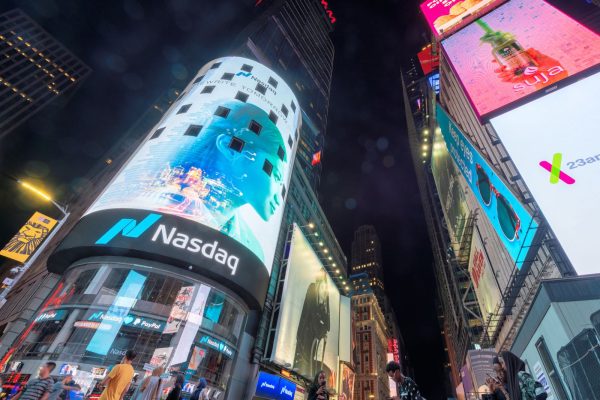Contents
- 1 Livestock Markets Are Going Bonkers. Here’s Why.
- 2 The Cash Market Is King Again
- 3 The Great Herd Shrinkage: Where Did All the Cows Go?
- 4 Demand That Just Won’t Quit
- 5 The Hog Wild Rally: It’s Not Just Cows
- 6 What This Means for Your Wallet
- 7 A Ripple Effect Across the Economy
- 8 So, What Happens Next?
- 9 The Bottom Line
Livestock Markets Are Going Bonkers. Here’s Why.
You’ve seen the headlines screaming about stock market rallies and tech booms, but have you glanced at the livestock pens lately? It turns out, the real action might be happening down on the farm. Cattle and hog markets are exploding, not with a whimper, but with a bang that’s sending shockwaves through the grocery aisle and the global economy.
Forget abstract futures contracts for a moment. This is about the power of cold, hard cash. A fundamental, no-nonsense force is driving prices to dizzying heights: there simply aren’t enough animals to meet ravenous demand. It’s the oldest story in the book—supply and demand—but this time, it’s playing out with a dramatic intensity that has everyone from ranchers to restaurant chains sweating.
Let’s talk about what’s really moving the needle.
The Cash Market Is King Again
In the financial world, we often get lost in the esoteric dance of futures and derivatives. It’s all algorithms and speculation. But out in the real world, where boots get muddy and livestock trailers rumble down country roads, the cash market is the undisputed ruler. This is the physical, immediate transaction where a buyer hands over money and a seller hands over a live animal.
Right now, that cash market is on fire.
Buyers for packing plants and major beef processors are scrambling to find animals. They’re competing fiercely, bidding against each other to secure supply. This isn’t a theoretical future price; this is the price for a cow you can load on a truck today. And that price is shooting straight up. When the cash market strengthens like this, it doesn’t just nudge the futures market—it drags it along for the ride, kicking and screaming if necessary.
The futures market, which often tries to predict where prices will be months from now, is being forced to play catch-up to the reality of today’s cash prices. It’s a humbling experience for the speculators.
The Great Herd Shrinkage: Where Did All the Cows Go?
So, why is there such a desperate scramble for cattle? The answer is simple but profound: the U.S. cattle herd is the smallest it’s been in decades.
We’re in the midst of a severe multi-year drought, particularly in the cattle-rich Southern Plains. You can’t run a ranch without grass and water. When pastures turn to dust and water holes dry up, ranchers face an impossible choice. They are forced to cull their herds, sending more mother cows to slaughter than they’d like, just to stay afloat. You don’t just magic new cows out of thin air. Rebuilding a herd takes years.
Fewer cows today mean dramatically fewer calves to be raised and finished for market tomorrow. The pipeline is constricted at its very source. This isn’t a temporary blip; it’s a structural shift that will define the market for years to come. The supply side of the equation has fundamentally tightened, and demand hasn’t gotten the memo to slow down.
Demand That Just Won’t Quit
Speaking of demand, what’s keeping it so strong? You’d think with sky-high prices at the meat counter, people would just switch to chicken. And some are. But the appetite for high-quality beef, it seems, is surprisingly resilient.
A lot of this boils down to fast-food and restaurant trends. The limited-time burger battle among major chains creates a huge, concentrated demand for specific types of ground beef. When every chain is promoting a new, fancy burger, they all hit the market at once, competing for the same finite supply of cattle.
Furthermore, despite all the talk of a shaky economy, the consumer—for now—is still spending. A strong job market means people are still willing to shell out for a steak dinner or a premium burger. It’s a classic standoff: shrinking supply versus stubborn demand. And in that battle, prices have only one direction to go: up.
The Hog Wild Rally: It’s Not Just Cows
Let’s not forget the pigs. The hog market has been on its own wild ride, and many of the same principles apply. While the dynamics are different from cattle, the theme of strong cash fundamentals is a constant.
The U.S. pork industry is massively dependent on exports. Countries like Mexico, Japan, and South Korea are huge buyers. When their demand is robust, it pulls product out of the domestic market, tightening supply here at home. Recent export sales data has been solid, providing a firm floor—and often a launching pad—for cash hog prices.
Domestically, we’re also seeing stronger demand for bacon and pork chops. It seems the American love affair with pork is enduring. Packing plants, much like their beef counterparts, need a steady flow of hogs to keep their operations running efficiently. That competition for supply in the cash market is a powerful price driver.
What This Means for Your Wallet
Okay, let’s get to the part you actually feel. What does a surging livestock market mean for you, standing in front of the meat cooler?
Be prepared for stubbornly high meat prices. This isn’t a bubble that’s going to pop next week. The cattle supply situation is a long-term story. It will take multiple years of favorable weather and profitable conditions for ranchers to even think about expanding their herds. Until then, the underlying pressure on beef prices will remain.
You might start to see some clever marketing. “Value-added” products, smaller packages, and promotions on alternative proteins will become more common. But the price for that ribeye or brisket? Don’t expect a fire sale anytime soon. The era of cheap beef might be taking an extended vacation.
A Ripple Effect Across the Economy
The impact of this livestock surge stretches far beyond the supermarket. It’s a major contributor to overall food inflation, which is a key data point the Federal Reserve watches like a hawk. Persistent inflation in the food sector can influence broader monetary policy decisions.
Then there’s the restaurant industry. Their margins are getting squeezed from all sides—labor costs, energy, and now, the raw cost of their signature menu items. How do you build a profitable menu when your main ingredient’s price is so volatile? Many are being forced to either raise menu prices or shrink portion sizes, a strategy sometimes called “shrinkflation.”
And let’s not forget the global picture. The U.S. is a major player in the global meat trade. When our prices soar, it affects food budgets and availability from Mexico City to Seoul. It’s a stark reminder of how interconnected our food systems have become.
So, What Happens Next?
Trying to predict commodity markets is a fool’s errand, but we can watch the key signals. Everyone will be watching the weather. Good, widespread rains in cattle country are the first step toward eventual herd rebuilding. It’s the most critical variable that no trader can control.
We also need to keep an eye on consumer behavior. There’s a limit to how much people will pay for a pound of hamburger. At a certain price point, even the most dedicated carnivore will start looking at chicken, pork, or plant-based options more seriously. That demand destruction is the natural counterbalance to soaring prices, but we haven’t hit that wall yet.
Finally, watch the basis—that’s the difference between the local cash price and the futures price. A strong basis is a telltale sign of a tight physical market. As long as cash keeps dominating, the overall market structure will remain firm.
The Bottom Line
The dramatic surge in livestock markets is a masterclass in economic fundamentals. It’s a story of brutal drought, disciplined supply, and surprisingly resilient demand, all playing out in the gritty, real-world arena of the cash market.
While the futures traders in Chicago place their bets, the real power lies with the ranchers managing their herds and the packers fighting to secure supply. This isn’t a speculative frenzy; it’s a fundamental squeeze. So the next time you see a headline about markets surging, remember that sometimes the most compelling action isn’t in a tech stock, but in the humble livestock pen. Just maybe don’t think about it too hard when you’re trying to enjoy your next, admittedly expensive, burger.






